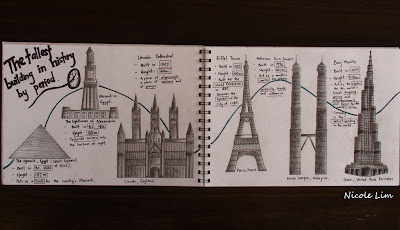Building materials are used in construction of buildings. There are many types of materials used over the centuries, decades and years. Materials has evolved over the years from the fabric, skin, wood, stone, metals and glass. As time has changed, the materials used has develop many countries for their society by providing shelter.
 | |
| CAVES, TENT AND WOODEN HOUSE |
Before materials were used or known, during the stone age, the natives lived in caves. Soon, man found out about fabric which are made from skin or cotton. The skin used are mostly animal skin also known as leather. Skin are usually used to make tents or teepee. These homes are usually dwell by nomadic groups. Besides that, wood was then used to construct infrastructure. The down-side of wood is its durability and fire risk.
 | ||
| ROCK , STEEL AND GLASS INFRASTRUCTURE |
Rock is a very dense material so it gives a lot of protection. Rock infrastructures are usually used to build fortresses in the past for protection of the country. Soon, the evolution of steel began, these days, many infrastructures are made from steel. As shown in the image above, the Eiffel Tower in Paris is made from steel. Steel is a metal alloy whose major component consist ofiron. Steel, is strong, flexible and has long durability.
Glass is made from mixtures of sand and silicates. Lately in the 21st century, glass has been quite popular in many infrastructure. By using glass, it enables natural lighting to enter the building and thus promoting 'Eco-friendly' living.
Although, many materials has been found or invented, these materials are still presently used in many countries. Every material has their advantages and disadvantages but none of them will go out of trend.
Ruth Teo
Ruth Teo












